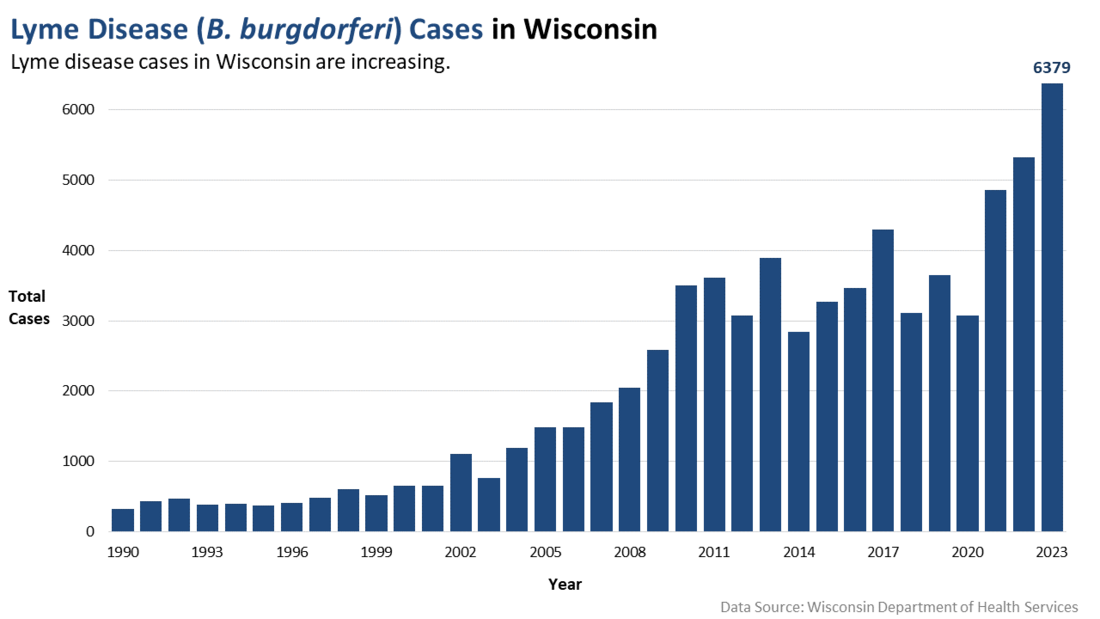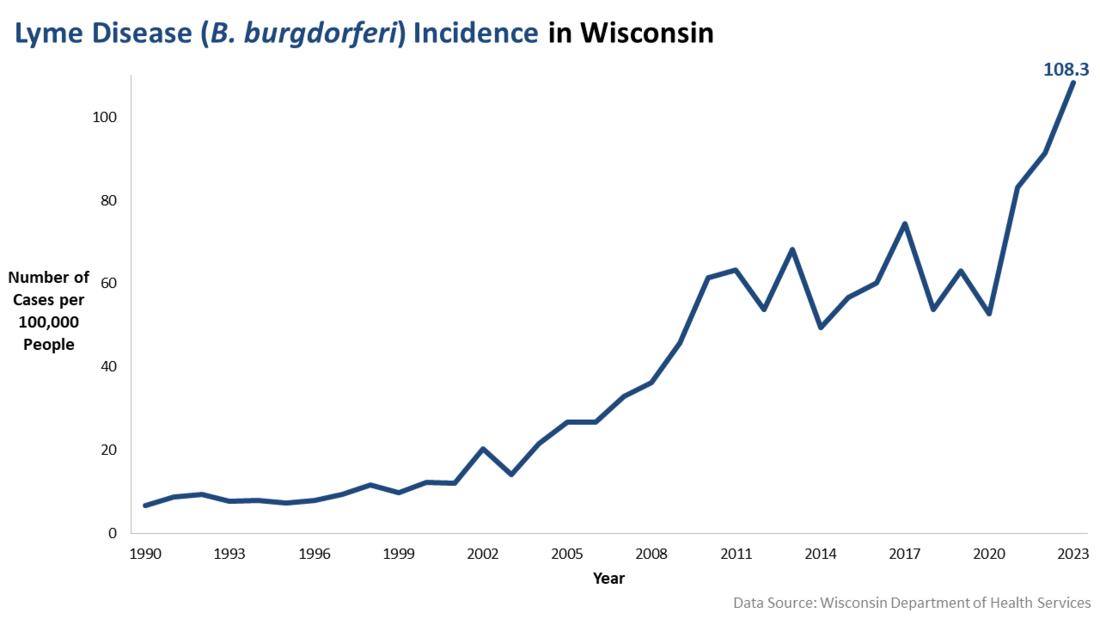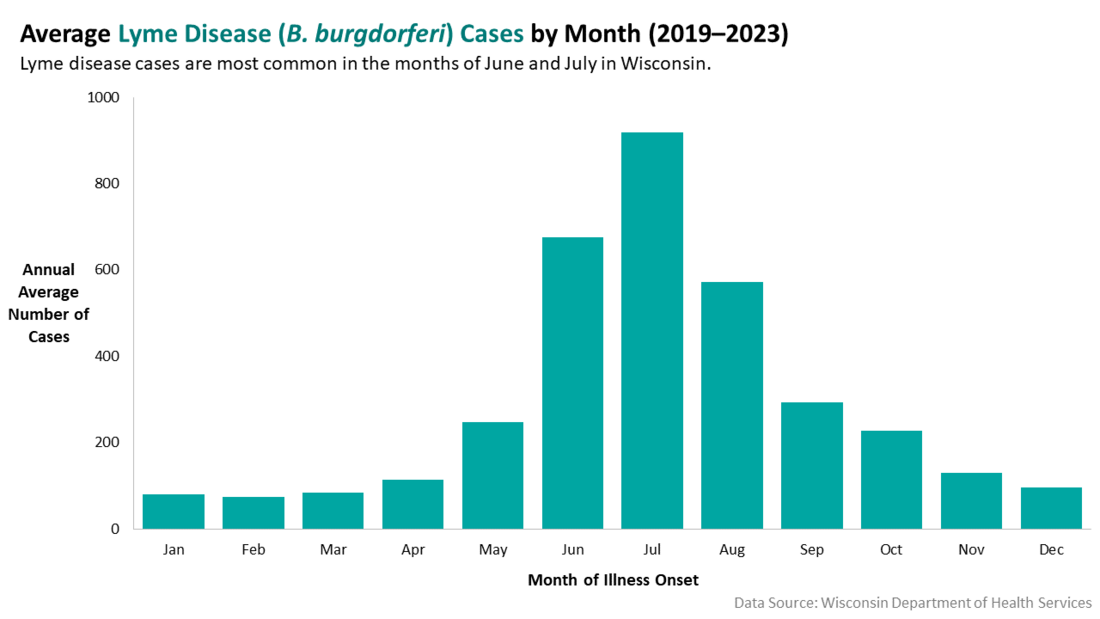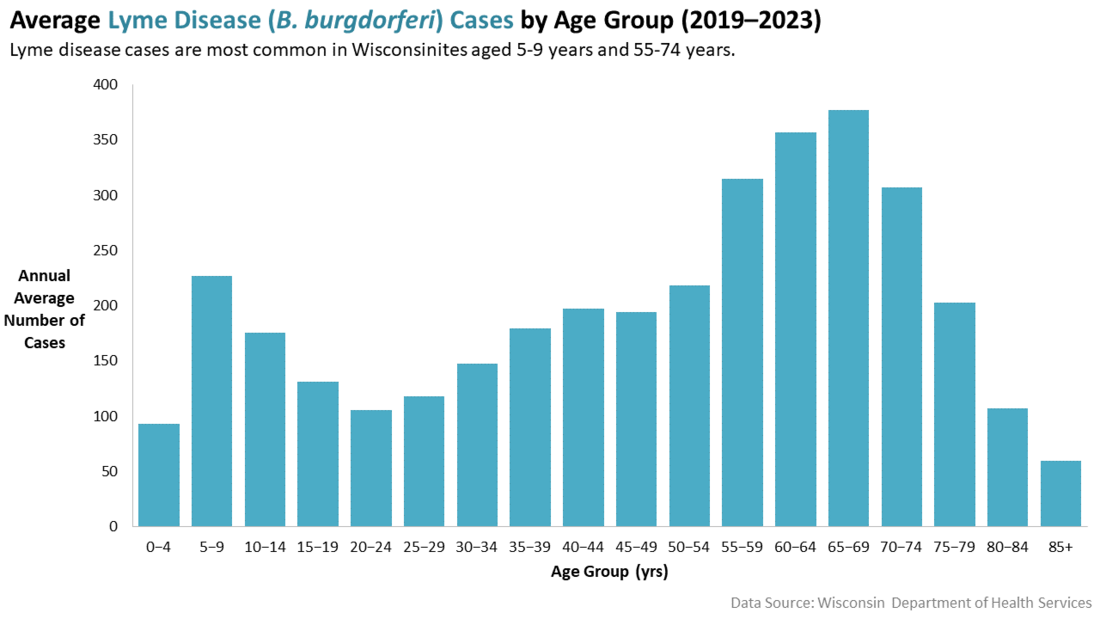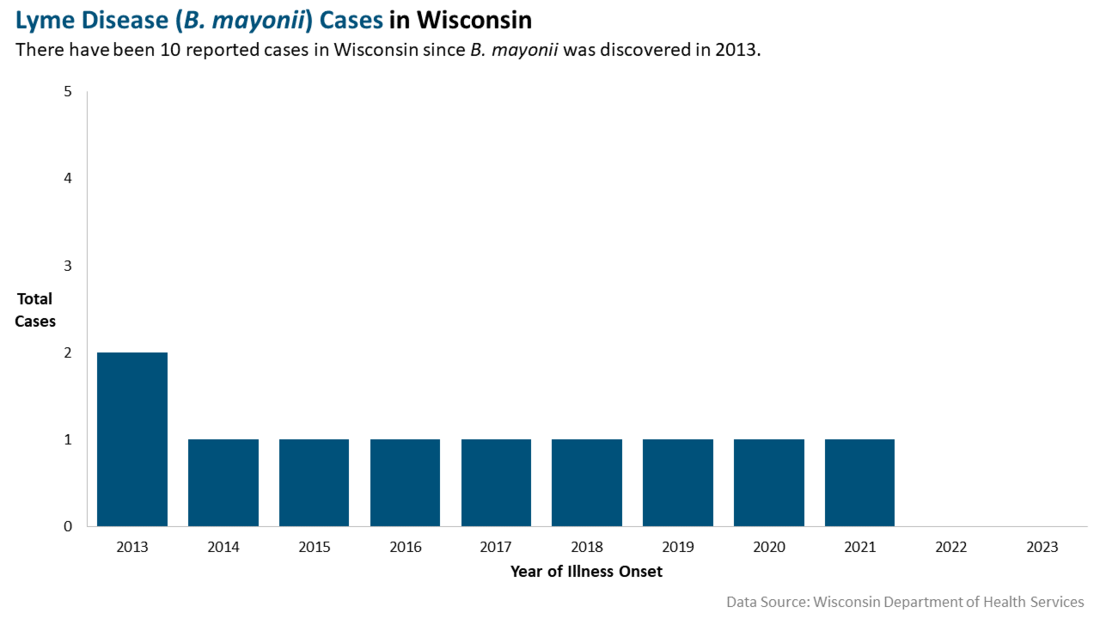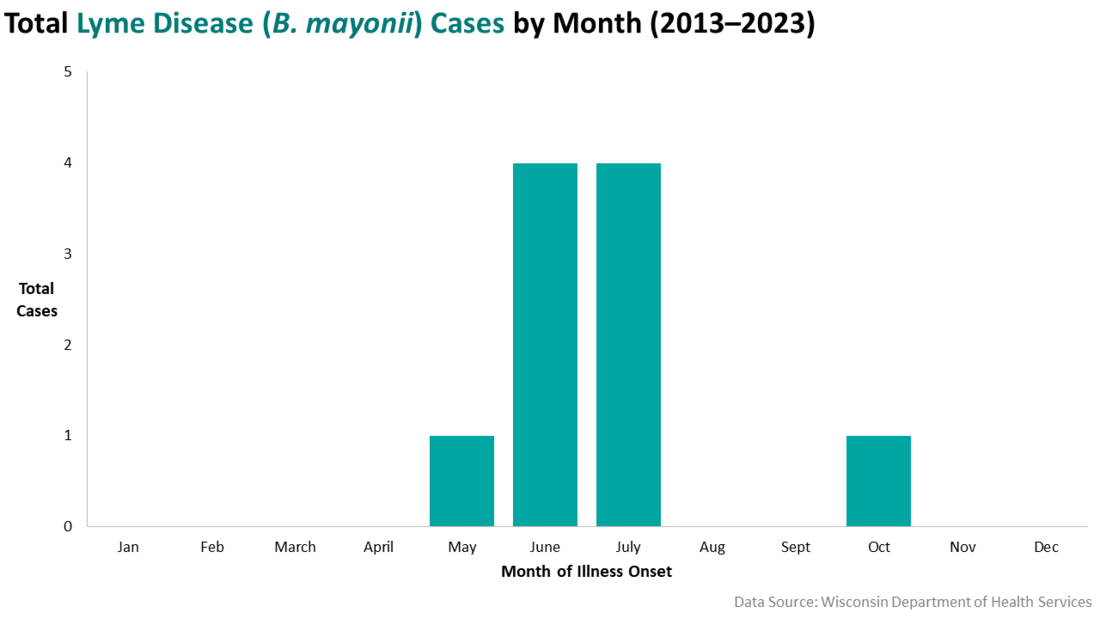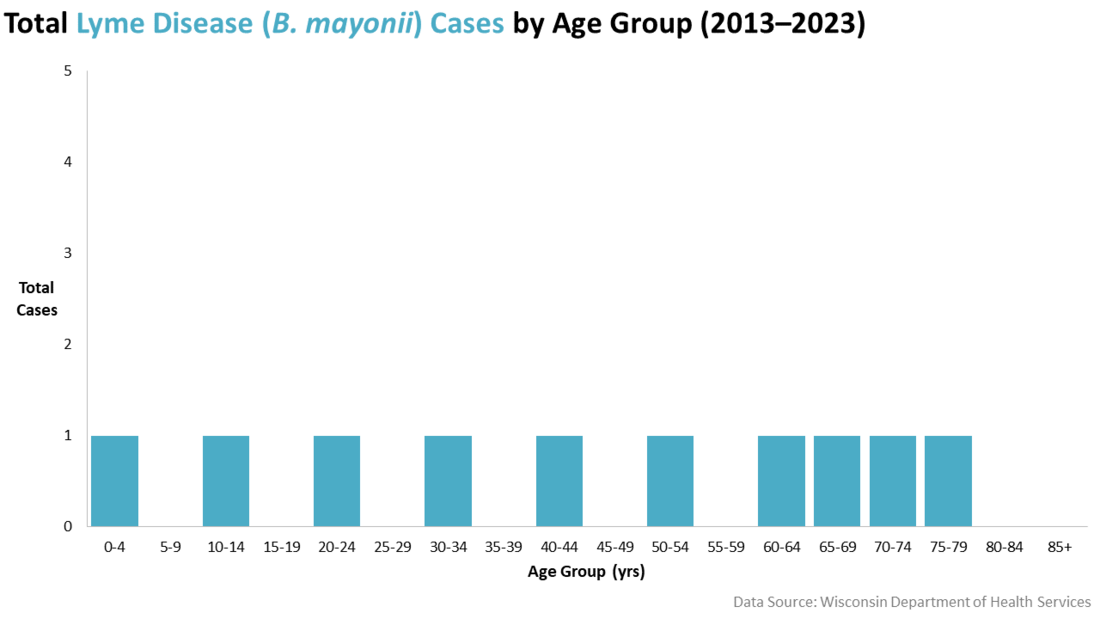Lyme Disease: Wisconsin Data
Lyme disease is very common in Wisconsin. In fact, Wisconsin is one of the states reporting the highest number of cases each year. Other states reporting high numbers of Lyme disease cases include Minnesota and several states in the northeastern United States.
Wisconsin had 6,469 cases of Lyme disease in 2024, the highest on record. On average, about 4,600 cases were reported each year during 2019-2023. The incidence of reported Lyme disease cases has quadrupled over the past 20 years.
Lyme disease and the tick species that carries it have spread from the northwestern part of the state to nearly all areas of the state over the past 35 years. This spread has caused more and more cases of the disease.
Lyme disease is preventable and treatable. Learn more about Tick Bite Prevention.
Read about Treatment and Signs and Symptoms of Untreated Lyme Disease from the CDC (Centers for Disease Prevention and Control).
The map and graphs on this page show statewide data for Lyme disease. For more detailed county-level data, see the Environmental Public Health Tracking: Lyme Disease.
For national data, visit the CDC webpage on Lyme Disease Data and Surveillance.
Borrelia burgdorferi data
This graph shows the number of reported Lyme disease cases each year in the state.
This graph shows the number of Lyme disease cases per 100,000 Wisconsin residents per year.
Most cases of Lyme disease occur during June and July. However, it’s possible to get Lyme disease whenever ticks are active. Ticks are active when temperatures are above freezing. It’s important to take steps toward Tick Bite Prevention when spending time outdoors.
Lyme disease is most common in younger and older people. However, people of any age can get Lyme disease.
Borrelia mayonii data
The bacterium Borrelia burgdorferi causes most cases of Lyme disease. However, Borrelia mayonii is a rare, newly emerging species. Borrelia mayonii also causes Lyme disease. It was first detected in 2013 in the Midwest, with 10 cases in Wisconsin residents from 2013 to 2024.
Contact us
Questions about illnesses spread by ticks? We’re here to help.
Bureau of Communicable Diseases
Phone: 608-267-9003
Fax: 608-261-4976


